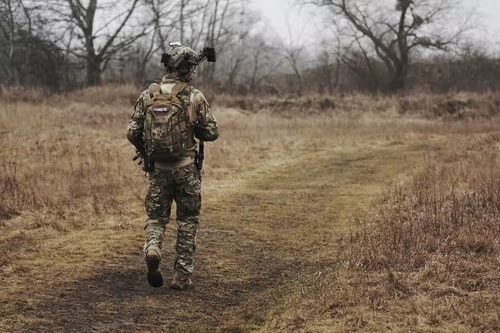Blog

Ukrainians have found a new use for facial recognition technology: identifying dead or captured Russian soldiers. So far, Ukrainians have conducted more than 8600 facial recognition searches and have contacted the families of nearly 600 Russian soldiers.
Ukraine is also using the technology to identify Russian soldiers who have been looting shops and homes as well as impostors posing as Ukrainians. Ukrainian soldiers are even using this technology on the battlefield, on patrol, and at checkpoints.
What Is Behind Ukraine’s New Strategy of AI Facial Recognition?
Facial recognition technology has the potential to identify soldiers who have committed war crimes or other immoral acts, so it’s easy to understand why the Ukrainian government would want to use it.
But why are they identifying dead Russian soldiers? Ukraine, at this point, is not concerned about worried Russian mothers. Rather, the government hopes that by informing enough Russian families that their loved ones have died or been captured, the people will revolt against the war and it will end quicker. This approach is quite controversial and ramifications are yet to be known.
The Company Making It All Possible
Ukraine’s facial recognition technology is not home-grown. It’s supplied by Clearview AI, a US-based tech company that allows the Ukrainian government to use the technology for free. The company offers training sessions for Ukrainian officials.
CEO Hoan Ton-That said that he offered the technology to Ukraine last month after he learned Russia claimed Ukraine was faking photos of captured and dead soldiers.
Clearview has had a history of controversy since its launch in 2017. While the system is mainly used in the US by the police forces and federal operators, the company has been criticized for the way it gathered its database of photos without the subjects’ consent.
Supplying the Ukrainian government with its facial recognition technology, including an app that can be used on the battlefield, has done nothing to place the company in a better light. Critics have accused Ton-That of trying to make money out of a tragedy. While Ton-That acknowledges he would like to expand from government to the private sector, he maintains that his only goal in giving the technology to Ukraine is to help their defense.
Is Ukraine’s AI-Based Strategy Effective? Is It Moral?
If Ukraine was only using AI facial recognition to identify war criminals or prevent Russian soldiers from looting, the discussion surrounding it would be different. However, Ukraine has a specific strategy in place to use AI to identify dead or captured Russian soldiers and then sending the photos to their relatives.
In line with this strategy, Ukrainians have also held news conferences with Russian soldiers who have been captured and posted their photos on social media.
Their goal is not to be cruel, but rather to show Russians how much they are losing in this war so they will call upon Putin to cease his onslaught. Some are concerned this strategy may backfire, as Russian culture is a proud one. Instead of causing Russians to call for an end to the war, Ukraine may inadvertently be stirring a desire to avenge the deaths of their loved ones or to rectify what they view as public humiliation.
Critics are calling it psychological warfare, saying it is not hurting Putin but Russian mothers. Even though most of the Western world supports Ukraine, this strategy seems to cross a line.
The Morality of Using AI in Modern Warfare
The Ukrainian use of facial recognition software is only one way AI is used in modern warfare. AI-enabled tanks, missiles, drones, and aircraft are some instances in which AI is used to create smart, autonomous weapons. China, Israel, Russia, South Korea, the UK, the US, Turkey, and others are heavily investing in lethal autonomous weapons (LAWs).
The question of morality is an unanswered one. Since AI is relatively new, there is no consensus on whether using it in warfare is ethical. In general, the idea of using weapons that may be too smart to control is troubling, to say the least.
In Ukraine’s situation, sending photos of dead bodies to Russian parents raises two issues: first, the problem of seemingly taunting Russian mothers about the deaths of their children. The second issue pertains to the quality of the AI technology. What if the software makes the wrong identification and a mother thinks her son is dead when he’s really alive?
While there are moral issues raised by the use of AI in war, the devil’s advocate may say that if AI has the potential to help underdogs like Ukraine against unwarranted invaders, it shouldn’t be discounted, especially since Russia’s entire war against Ukraine seems so immoral in the first place.
As of now, there are no global regulations and countries must use their own moral compasses to decide which lines to cross. One thing is certain: the use of AI facial recognition in warfare is in its infancy and certain to become more prevalent and accessible.

